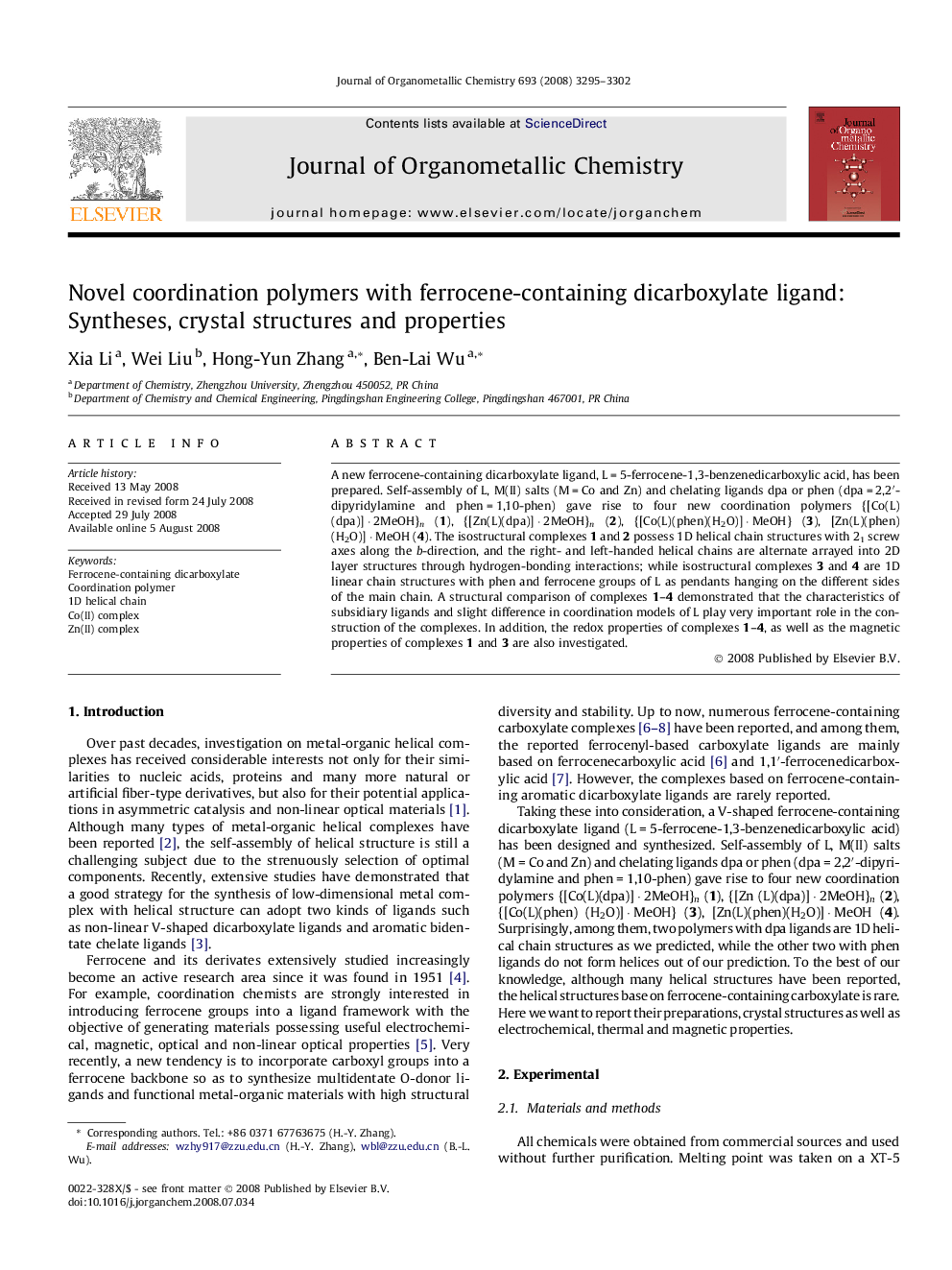| کد مقاله | کد نشریه | سال انتشار | مقاله انگلیسی | نسخه تمام متن |
|---|---|---|---|---|
| 1322939 | 977257 | 2008 | 8 صفحه PDF | دانلود رایگان |

A new ferrocene-containing dicarboxylate ligand, L = 5-ferrocene-1,3-benzenedicarboxylic acid, has been prepared. Self-assembly of L, M(II) salts (M = Co and Zn) and chelating ligands dpa or phen (dpa = 2,2′-dipyridylamine and phen = 1,10-phen) gave rise to four new coordination polymers {[Co(L)(dpa)] · 2MeOH}n (1), {[Zn(L)(dpa)] · 2MeOH}n (2), {[Co(L)(phen)(H2O)] · MeOH} (3), [Zn(L)(phen)(H2O)] · MeOH (4). The isostructural complexes 1 and 2 possess 1D helical chain structures with 21 screw axes along the b-direction, and the right- and left-handed helical chains are alternate arrayed into 2D layer structures through hydrogen-bonding interactions; while isostructural complexes 3 and 4 are 1D linear chain structures with phen and ferrocene groups of L as pendants hanging on the different sides of the main chain. A structural comparison of complexes 1–4 demonstrated that the characteristics of subsidiary ligands and slight difference in coordination models of L play very important role in the construction of the complexes. In addition, the redox properties of complexes 1–4, as well as the magnetic properties of complexes 1 and 3 are also investigated.
Self-assembly of a new ferrocene-containing dicarboxylate ligand L (L = 5-ferrocene-1,3-benzenedicarboxylic acid), M(II) salts (M = Co and Zn) and chelating ligands dpa or phen (dpa = 2,2′-dipyridylamine and phen = 1,10-phen) gave rise to four new coordination polymers 1–4. The isostructural complexes 1 and 2 possess 1D helical chain structures with 21 screw axes along the b-direction, and the right- and left-handed helical chains are alternate arrayed into 2D layer structures through hydrogen-bonding interactions; while isostructural complexes 3 and 4 are 1D linear chain structures with phen and ferrocene groups of L as pendants hanging on the different sides of the main chain. A structural comparison of complexes 1–4 demonstrated that the characteristics of subsidiary ligands and slight difference in coordination models of L play very important role in the construction of the complexes.Figure optionsDownload as PowerPoint slide
Journal: Journal of Organometallic Chemistry - Volume 693, Issue 20, 1 October 2008, Pages 3295–3302